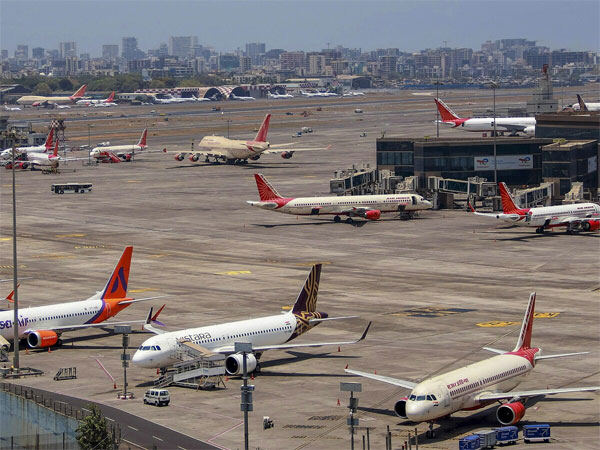Daijiworld Media Network - New Delhi
New Delhi, Oct 23: India’s aviation industry is flying high, emerging as the third-largest domestic aviation market in the world and one of the fastest-growing globally. The number of operational airports has more than doubled from 74 in 2014 to 163 in 2025, marking a transformative decade for the sector.
According to an official statement issued on Thursday, the government aims to expand this network to over 350 airports by 2047, aligning with India’s vision for its 100th year of independence. Passenger traffic is projected to exceed one billion by then, while the aviation ecosystem is expected to generate around 25 million jobs, driven by growth in Maintenance, Repair and Overhaul (MRO), drone manufacturing, and pilot training.

The government highlighted that aviation will play a central role in powering India’s $10 trillion economy by 2047. The statement credited the UDAN (Ude Desh ka Aam Nagrik) scheme—launched in October 2016—with transforming regional air connectivity. In its nine years, UDAN has operated over 3.23 lakh flights carrying 1.56 crore passengers, operationalised 649 routes, and connected 93 aerodromes, including two water aerodromes and 15 heliports. The scheme has also linked the Andaman, Nicobar, and Lakshadweep Islands to the national air grid.
The International Civil Aviation Organisation (ICAO) estimates that every rupee invested in aviation generates more than three times its value in economic output and supports six times as many jobs through related industries. Currently, India’s aviation sector directly employs about 369,000 people and supports 7.7 million jobs indirectly, with demand for skilled personnel—pilots, engineers, and logistics staff—set to surge.
India’s international reach is expanding as well, with over 116 bilateral Air Service Agreements strengthening connectivity and trade. The sector has become a key driver of FDI inflows, technology transfer, and the Make in India initiative, particularly in aircraft manufacturing and MRO services.
Domestic air traffic has grown consistently at 10–12 percent annually, and by 2040, passenger volumes are expected to reach 1.1 billion. The commercial airline fleet, which stood at 400 aircraft in 2014, is projected to expand to around 2,359 by 2040.
According to NITI Aayog, domestic travellers already account for over 83 percent of tourism spending, expected to rise to nearly 89 percent by 2028. Government initiatives like UDAN have been instrumental in bridging infrastructure gaps and making air travel more inclusive, connecting cities once considered remote—such as Kullu, Darbhanga, Hubballi, and Shillong—and fueling regional economies through tourism and trade.
India’s aviation ascent, the statement concluded, reflects the nation’s broader ambition: to make air travel affordable, accessible, and a key driver of economic growth in the decades ahead.